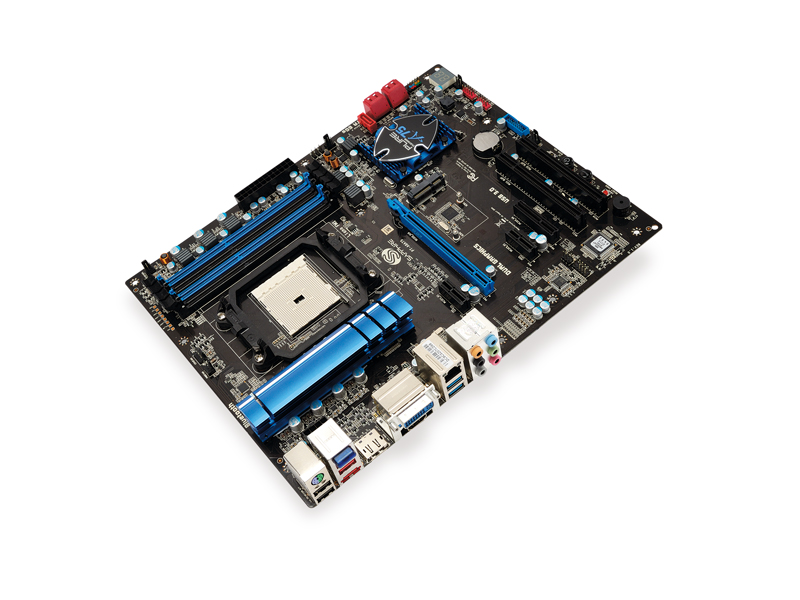TechRadar Verdict
Pros
- +
Decent feature set
- +
Bundle includes a USB 3.0 front box
- +
Free DiRT 3!
Cons
- -
BIOS needs some tweaking
Why you can trust TechRadar
Sapphire creates a huge amount of graphics cards for AMD, and now it's ramping up the motherboard side of the business with the its Pure Platinum A75.
While AMD has been leading the way in graphics technology and stirring up all sections of the graphics market, the processor side of the company has been in the doldrums.
But now that's all set to change with new APUs and supporting chipsets that are part of the desktop Llano Lynx platform. Apart from anything else this brings with it integrated graphics that are worthy of the PC gamer.
We've already seen mobos from Asus, MSI and Gigabyte that support AMD's new Lynx platform so it was only a matter of time before a board from AMD's biggest partner, Sapphire, supporting the new APU's and chipset crossed the bench.
The Pure Platinum A75 follows the same basic look and feel of every Sapphire board since its return to the motherboard business, built on a black PCB with blue and black memory and expansion slots. Sapphire's mobo is a well-built board with decent attention paid to the components.
This is particularly apparent in the power design which uses parts that you would normally expect to find on high-end boards.
The memory options in the BIOS go up to 1,866MHz as standard, which along with 1,600MHz modules is now officially recognised by JEDEC, the overlords of memory, as standard DDR3 speeds.
The downside to using the faster 1,866MHz memory is that you are limited to using two slots, if you want to fill all four slots you'll have to drop the speed down. We stuck in a couple of 1,600MHz modules, although the memory was reportedly being run at just 1,333MHz. A quick delve in to the BIOS to manually adjust a couple of things was all that was need to have everything speeding along at the right speed without any further problems.
When it comes to overclocking, the board's BIOS may not be quite as featur rich as say Asus's F1A75-V but it is still comprehensive enough to allow a good many tweaks. We got an AMD A8-3850 to play at 3.6GHz without any problems and that's a healthy 700MHz jump.
Setting up the Dual Graphics (AMD has dropped the CrossFire name for dual graphics setups in Llano) was as straightforward as dropping in a HD 6670 card into the slot. Having the secondary discrete GPU propping up the integrated graphics of the Llano Lynx APU yields a nice boost to frame rates.
There is only a single PCI-e slot, but on this platform a discrete GPU CrossFire setup would nullify the graphics part of the APU, essentially leaving you with a weak, basic CPU only. It makes sense then to have the option for a single discrete graphics card with the extra slot left over for a TV tuner or discrete sound card.
TechRadar Labs

CPU rendering performance
Cinebench R11.5: Index: Higher is better
Sapphire Pure Platinum A-75: 3.42
Asus F1A75-V Pro: 3.42
MSI A75MA-G55: 3.40
CPU gaming performance
Shogun 2: Frames per second: Higher is better
Sapphire Pure Platinum A-75: 17
Asus F1A75-V Pro: 20
MSI A75MA-G55: 19
DirectX 11 1080p gaming performance
DiRT3 (4xAA): Frames per second: Higher is better
Sapphire Pure Platinum A-75: 13
Asus F1A75-V Pro: 13
MSI A75MA-G55: 12
Unfortunately because of the relative newness of the Llano Lynx chipset there is a price-premium attached to this board. At £100 it's quite pricey for what should essentially be the basis for a cheap PC. With the APUs themselves costing around £100 as well, that's quite a total platform cost.
Follow TechRadar Reviews on Twitter: http://twitter.com/techradarreview
